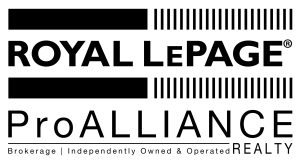A Seller receives two competing offers – one has a condition to sell their home, the other doesn’t. Depending on the home that needs to be sold, where it is located and price it’s being listed at, and assuming the purchase price, terms and conditions are reasonably similar, chances are the Seller will accept or choose to work with the offer without the condition to sell a home. So what’s the value of the offer with the Sale of Buyer’s Property (SBP) condition? It typically maximizes the sale price for the Seller. So where does that leave the Buyer with the SBP condition? They’re still looking for a home and in the meantime, they’ve helped to establish one more high sale in the books to be used as a comparable to establish price for the next similar listing – a possible listing that could be of interest to the Buyer who’s offer wasn’t accepted. They might be making a difficult market to buy in, more difficult.
If both offers have a sale of buyer’s property condition, and if this condition is acceptable to the Seller, the Seller will work with or accept the offer they prefer and hope that their buyer sells quickly or that a new buyer comes along and is able to “bump” the conditionally accepted SBP offer. In order for an offer to do this, it will likely be without an SBP condition or the Seller will feel more confident that the new SBP home will result in a faster sale. There is almost always an escape clause in an offer that contains an SBP condition. This escape clause will allow the Seller to continue looking for a Buyer, and if an acceptable offer comes along, the initial Buyer will have a contractually set amount of time to firm up or be released from the agreement. This “first right of refusal” time is typically 24, 48 or 72 hours – whatever the Buyer and Seller have agreed to.
When faced with the option of entering a competing offer scenario and knowing you need to sell your home, one Buyer strategy is “You miss one hundred percent of the shots you don’t take.” – a quote and perspective compliments of “The Great One”, Wayne Gretzky. Based on this quote, one might say always make an offer, but don’t forget, The Great One didn’t always take the shot – he was one of the best playmakers of all time. Another strategy is to see what happens to the other offer without getting involved and driving up the price in a competing offer scenario. If it turns out that the other offer did not have a condition to sell a home, you can rest easy that your offer would not likely have been accepted. If it turns out that nothing comes of the other offer – all is clear to submit an offer in a more civil arena. And finally, if the offer is accepted with an SBP condition, you can now attempt to be the offer that “bumps” the first one.
There’s also the option of not including the sale of your home as a condition in your offer – even though you need to sell it. I’ve seen it work – many times – in a hot Seller’s market and when your home is looking it’s best and “priced right”. There’s also enough litigation as a result of this risky option, to create a compelling case against this practice. Are you Gambler? Are you the person who puts everything on the line for one hand; for what you think is a good hand but in fact is more of a bluff than you care to admit?
If you find yourself in a market where competing offers are a regular occurrence and if there is typically something listed on the market that you would be interested in, you might be far better off, to first find a buyer for your own home, making sure that you have a condition to secure a satisfactory home for yourself – now you can go into an offer with a lot more strength and bargaining power.

